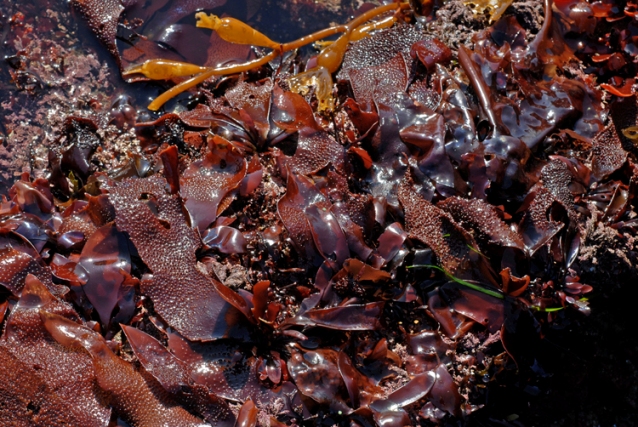
My Website
What is Mastocarpus papillatus?
Congratulations, you have discovered a website completely dedicated to Mastocarpus papillatus. If you are wondering, what exactly is Mastocarpus papillatus, then you have come to the right place. Mastocarpus papillatus, commonly known as the Little Turkish Washcloth, is a species of red algae commonly found in marine high intertidal zones. It gets its name from the many papillae present on the female gametophyte. The papillae are small bumps located on the surface of the blades. Once fertilization occurs, they become visible and give rise to new zygotes called carposportophytes. The male gametophyte has no papillae. It is more of a yellow to light pink shade and has a thinner blade than the female. The most confusing stage is the tetrapsorophyte, once thought to be a different alga altogether. It is encrusting and looks like a patch of soft tar on a rock. Once the life cycle was figured out the species became known as Mastocarpus papillatus. However, common synonyms still exist such as Gigartina papillata. Mastocarpus papillatus can undergo considerable desiccation, and it can withstand high temperatures. It has also developed other adoptions to surviving in these intertidal zones.
Why should you care about Mastocarpus papillatus?
Mastocarpus papillatus is an important species due to its interactions with many other organisms. For thousands of years, humans have used Red Algae to improve their health. Today, Mastocarpus papillatus has some important medical uses, and scientists continue to research this species extensively.
To learn where Mastocarpus papillatus fits into the world, please visit Classification.
]This website is part of a larger project which can be viewed at Multipleorganisms.net
This site was created by Joe Lutz.
University of Wisconsin-La Crosse Organismal Biology
Last Updated 4/16/2011
